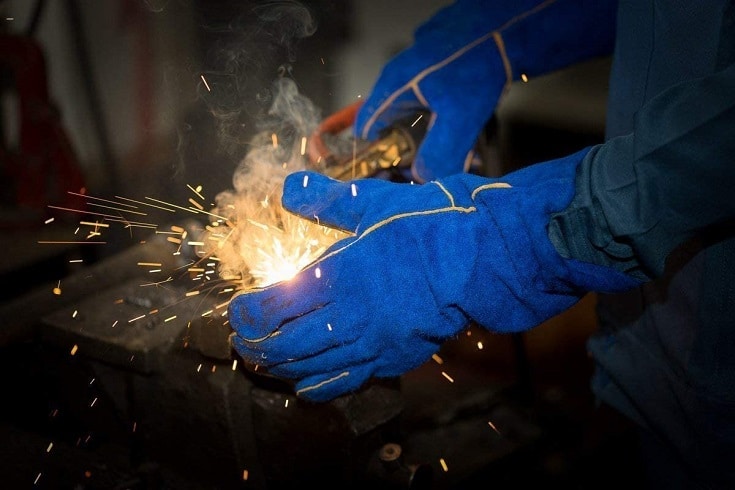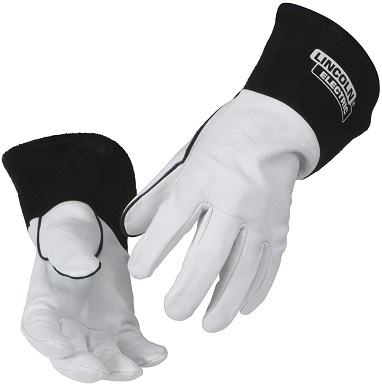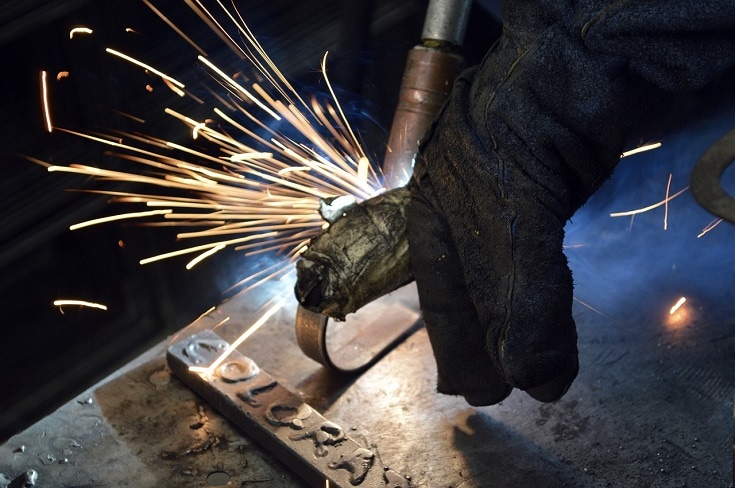What Do Welding Gloves Protect Against? What You Need to Know!
Last Updated on

Have you ever heard the phrase “If you gamble with safety, you bet your life”? Welding is typically a risky task, and wearing gloves comes in handy in protecting both the wrist and the hands. Besides protecting welders against electrical shock, these gloves provide improved grip and abrasion against resistance during welding.
What to Consider When Purchasing Welding Gloves
The gloves are manufactured in a wide range of designs, styles, and materials. They must be tested and certified to protect against electrical shocks, ultraviolet radiation, and cuts. With a wide array of welding gloves out there, choosing the right one can be confusing. Below are three primary factors to reflect on when purchasing welding gloves:
1. The Type of Welding That You Engage In
The material commonly used in making welding gloves is the top leather obtained from animal hides such as cows, swine, goats, and deer. The application primarily depends on the material used.
- TIG Welding Gloves – TIG welding requires a significant amount of skill and protection against heat. The glove is manufactured using goatskin because it is long-lasting. The efficacy is customarily tested by trying to pick up something modest, like a dime, for instance. Should you experience difficulties when picking it, you will have to settle for a different and more comfortable pair.
- Stick Welding Gloves – The heavy-duty cow split glove is an ideal material here because this type of welding requires the highest level of protection. Splattering and high heat should be given much focus when selecting the stick welding gloves. Elk hides can also be used in manufacturing stick gloves because, unlike cowhides, they do not harden fast when exposed to heat. This makes them suitable for stick welding.
- MIG Welding – Unlike TIG welding, MIG produces more heat and sparks. The best materials for designing gloves for this type of welding include heavyweight cow split, lines goat, and cow grain. MIG welding gloves are durable. These welding gloves should protect you against heat, sparks, and harmful spatters.
- Cut-resistant Gloves – In circumstances where you must work with blades and sharp objects, cut-resistant gloves will be the best alternative to ensure your protection. Using these gloves requires you to balance your work proficiency and the likelihood of being cut by a sharp instrument. In other words, cut resistance is precisely engineered to protect the glove from damage and the welder from injuries caused by sharp tools such as ceramics, glass, metals, among others.

2. Type of Insulation
One fact about welding is that a considerable amount of heat is usually emitted. Getting to understand the type of insulation is necessary to get you maximum protection. Good insulators are made of materials such as Kevlar liners, cotton liners, and aluminum.
3. Hand Movement
Dexterity level relies heavily on the type of welding task that you perform. MIG and stick welding requires high protection from heat, while TIG requires gloves that will give welders high dexterity levels.
Specifications
Testing a welding glove’s comfortability is as simple as wearing it, then trying to pick something like a coin. Prolonged exposure to excess heat may dry out of the gloves, particularly the part where the welder grasps the weld gun. To avoid this inconvenience, consider buying welding gloves with extra leather on the thumb, index finger, and the hand’s metacarpus area. Kevlar seams pay more attention to lengthening the durability of the welding glove.
Since leather generally heats faster, the gloves made from the material are insulated. Anti-spatter sprays act as insulators to prevent the leather from burning down.
FAQs
1. Are Welding Gloves Shockproof?
Welding gloves are shockproof because they do not conduct electricity. They are designed to ensure that the welder’s hands are protected against electrical shock, intense heat, infrared radiation, and physical cuts. It is imperative to note that the gloves will not stop the passage of current through other body parts and should strictly not be used on an electrical ground.
2. How Long Do Welding Gloves Last?
The shelf life of welding gloves depends on the quality and frequency of use. If they are subjected to low heat and fewer working hours, the lifespan becomes longer than the ones frequently exposed to high heat and much work. Generally, if a quality pair of gloves is well-maintained, it should last you a few months-like two months.

Final Thoughts
Quality welding gloves must be durable and serve their purpose. The right welding gloves should protect you against ultraviolet radiation, fit properly, and be comfortable. When making a purchase, consider the material, insulation, and comfort. Remember, safety fits like a glove, wear them.
